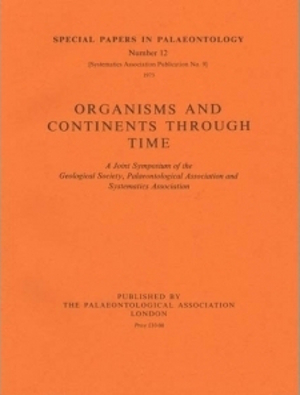Reg. Charity No. 1168330

PROFESSOR Yale Mintz of the Department of Meteorology, University of California, Los Angeles, spoke about his work on the numerical modelling of the climate. A discussion of this work is given in:
Dr. J. D. Hudson said that some contributions at the conference had given the impression that the history of biotic distributions was completely determined by climatic factors which were in turn completely determined by the history of the geometrical arrangement of continents on the globe; the organisms merely reacting passively to their climatic environment. Such a view appears to neglect both the possibility of changes in the' chemical composition of the atmosphere and hydrosphere, which would have affected climate among other things, and also the 'feedback' effect of organisms on their environment. Both points are clearly relevant in the Pre-Cambrian, where according to several popular theories such as Cloud's, the oxygen percentage of the atmosphere increased from zero to approach its present level, and this increase was mainly due to photosynthesis. But even in the Phanerozoic it seems probable that geometry is not all, because we know that organisms evolved as well as moving around, and major events such as the rise of land plants or the evolution of calcareous and siliceous micro-plankton should have had an effect on the global environment.
The case of the oxygen and carbon dioxide balance of the atmosphere had been the subject of much speculation, and variations in it might well have profound climatic and directly physiological effects on the biota, its evolution and distribution. Van Valen (1971) has pointed out that whereas something must regulate the present oxygen percentage in the atmosphere, because a 'random walk' would be extremely unstable, it is far from clear what this regulatory factor is.
If palaeoclimates can be modelled assuming the present atmosphere, etc., but variable continental geometry, as proposed by Dr. Mintz, we may compare the predictions with the observed palaeoclimatic record. A close agreement should indicate a gross constancy in the state of the atmosphere over the period of geological time involved in the comparison, and if the atmosphere and biosphere interact to determine atmospheric composition, this may in turn imply a gross constancy in the state of the biosphere. Late Cretaceous events might provide a suitable test.
No Supplementary Information available.